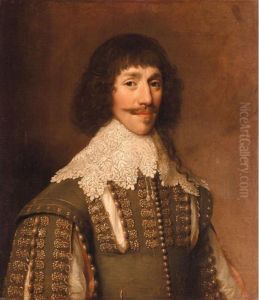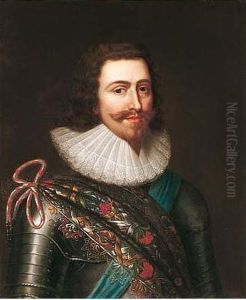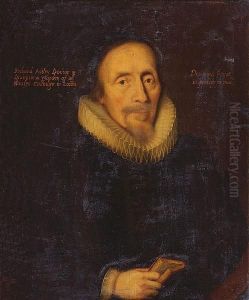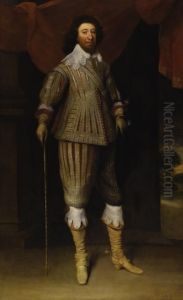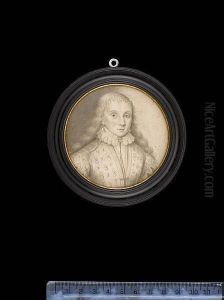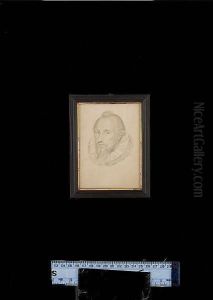Balthasar Gerbier D'Ouvilly Paintings
Balthasar Gerbier d'Ouvilly, born in 1592 in Antwerp, was a Flemish Baroque painter, diplomat, and architect who spent a significant portion of his career in England. Gerbier was born to a Huguenot family and his early life was marked by the religious turmoil of the times. He received his artistic training in the Low Countries, which was a center for artistic innovation during the early 17th century. His early work as an artist is not well-documented, but it is known that he moved to England in the 1610s.
In England, Gerbier became closely associated with the court of King James I and, later, Charles I. He served as a courtier and was knighted for his services. Gerbier's role at the court extended beyond that of an artist; he was also involved in diplomatic missions and intelligence gathering, which took him across Europe. His diplomatic career was intertwined with his artistic activities, as he worked both as a portrait painter and a designer of court masques, combining his creative talents with his political acumen.
Gerbier was deeply involved in the intellectual and cultural circles of his time, and he acted as a patron to other artists and as an art agent, organizing the acquisition of artworks for the royal collection. In addition to painting, he had an interest in architecture and proposed several architectural projects, though few were realized. His architectural drawings contribute to the understanding of early 17th-century architectural ideas in England.
Throughout the English Civil War and the Commonwealth period, Gerbier's fortunes waxed and waned. After the execution of Charles I, he found himself in a precarious position due to his royalist connections but managed to survive the period by adapting to the changing political climate. With the restoration of the monarchy in 1660, Gerbier hoped to regain his former status, but his final years were not marked by significant achievements. He died in 1663, leaving behind a diverse legacy that reflects the multifaceted nature of his career, which spanned the visual arts, architecture, and diplomacy.
